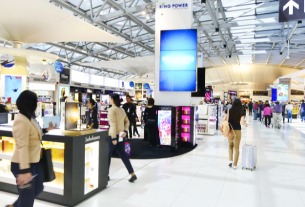While it might not be having the easiest time in its core European markets at the moment, TUI has still got its eyes on global expansion.
The travel giant flagged Wednesday the possibility of entering new markets in 2017 and the plans are still on track.
To execute its strategy, TUI will behave differently. In its current core markets — the United Kingdom, Germany, and others — it has 21 million customers, who purchase a pre-packaged vacation product and fly to their destination on TUI aircraft.
In the new markets, TUI will ape online travel agencies, selling dynamic packages with the aim of getting to one million customers and $1.1 billion (€1 billion) in revenue by 2022. Markets TUI is targeting include China, Brazil, and India, all of which already have strong local online travel players including Ctrip, Despegar, and MakeMyTrip.
Despite these strong incumbents, TUI CEO Fritz Joussen is relaxed about the competition and if anything, he believes the original target of one million was too “conservative”.
So far the company is up to 200,000 passengers per year, double the amount it had in 2018.
“We have asymmetric conditions because the OTAs need to make money by being OTAs right, and we make money by selling hotels. So…we can put some of the traffic into our own hotels and if we just got 10 percent of our traffic in our hotels the platform is paying for itself,” Joussen said on a media call after the release of the company’s first-half results on Wednesday.
He added: “OTAs need to earn money with the platform and the sales…we can use vertical integration.” The idea being for TUI to use these new markets to top up any space it might have in its own-brand hotels, using a relatively cheap and risk-free model.
To facilitate the expansion TUI will use what it calls a new GDN-OTA (Global Distribution Network-Online Travel Agency) platform.
TUI’s explanation of its strategy comes at a challenging time for the European travel industry with competition in key markets such as Spain, Brexit and the after effects of last year’s summer heatwave.
All of these factors put pressure on TUI’s first-half performance. The Hanover-based company made a first-half loss of $426 million (€381 million), up 47.5 percent on the prior year. Slipping further into the red isn’t necessarily a problem for such a seasonal business, as European travel companies like TUI make most of their money when people actually go away on vacation over the summer months.
Still it has been a pretty tough year and TUI also has had to contend with the 737 Max aircraft grounding, which has so far cost it $5.6 million (€5 million).
At the moment TUI assumes the grounding will cause a one-off impact to earnings of $224 million (€200 million) but this is based on the Max returning to service by mid July at the latest – something that is not guaranteed.
Read Original Article




